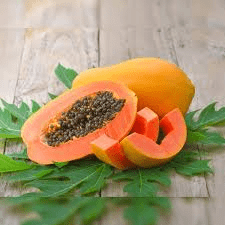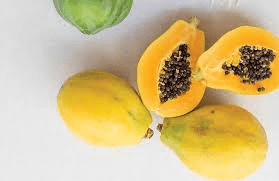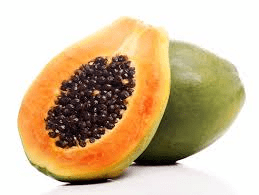Exporting papayas can be a profitable venture if done correctly. This guide will provide you with detailed steps on how to process, package, and export papayas to ensure they reach the international market in optimal condition. By following these steps, you can maximize the quality and shelf life of your papayas, making them more appealing to buyers.
Start by harvesting papayas when they are mature but not fully ripe. Look for a slight yellow tint at the base and firm flesh. Clean the papayas thoroughly with water and a soft brush to remove dirt without damaging the skin. Sort the papayas by size, color, and quality, discarding any damaged or diseased fruits.
Place selected papayas in a controlled ripening environment, using ethylene gas if necessary. Once ripened, cool the papayas to 10-13°C (50-55°F) to slow down further ripening and extend shelf life. Package the cooled papayas in ventilated cardboard boxes with proper padding to prevent bruising.
Label each package with necessary information such as origin, variety, weight, and exporter details. Have the papayas inspected by a phytosanitary authority to ensure they meet export standards. Prepare all required export documentation and arrange transportation in refrigerated containers to maintain quality during transit.
Select sturdy, ventilated packaging materials like cardboard boxes or wooden crates. Line the boxes with soft material to cushion the papayas and prevent bruising. Arrange the fruit in a single layer with some space between each one and add additional padding for extra protection. Secure the boxes with tape or staples, ensuring they are well-sealed.
Label each box clearly with necessary information using waterproof labels. Inspect the packaging for any damage or weakness and reinforce as needed. Store the packed papayas in a cool, dry, and well-ventilated place until shipment.
Carefully load the boxes into the transportation vehicle using pallets to allow for proper airflow. Maintain the correct temperature during transport to prevent over-ripening or spoiling, using refrigerated containers if necessary.
Conduct market research to understand the demand, preferences, and pricing for papayas in your target market. Ensure your papayas meet the quality standards required by the target market. Set competitive prices based on market research, production costs, and desired profit margins.
Develop a marketing strategy to promote your papayas through online platforms, trade fairs, and networking. Negotiate terms and contracts with buyers, documenting all agreements. Familiarize yourself with export regulations of both the exporting and importing countries and ensure compliance.
Choose a reliable shipping company experienced in handling perishable goods and negotiate shipping rates. Insure the shipment against potential risks. Maintain good communication with buyers throughout the export process and provide updates on shipment status. Monitor the export process and collect feedback from buyers to improve future shipments and build long-term relationships.
How to Process Papayas (Pawpaw) for Exportation

1. Harvesting: Pick papayas when they are mature but not fully ripe. Look for fruit that has a slight yellow tint at the base and firm flesh.
2. Cleaning: Wash the papayas thoroughly to remove dirt and debris. Use clean water and a soft brush to avoid damaging the skin.
3. Sorting: Sort the papayas by size, color, and quality. Discard any damaged or diseased fruits to ensure only the best ones are selected for export.
4. Ripening: Place the selected papayas in a controlled ripening environment. Use ethylene gas to speed up the ripening process if necessary. Ensure the ripening room is clean and has good ventilation.
5. Cooling: After ripening, cool the papayas to around 10-13°C (50-55°F). This helps to slow down the ripening process and extend the shelf life of the fruit.
6. Packaging: Place the cooled papayas in clean, dry, and ventilated packaging. Use materials like cardboard boxes with proper padding to prevent bruising during transport.
7. Labeling: Label each package with the necessary information, including the origin, variety, weight, and exporter’s details. This ensures traceability and compliance with import regulations.
8. Inspection: Have the papayas inspected by a phytosanitary authority to ensure they meet the export standards and are free from pests and diseases.
9. Documentation: Prepare the required export documentation, such as phytosanitary certificates, commercial invoices, and packing lists. Ensure all documents are accurate and complete.
10. Transportation: Arrange for the transportation of the papayas to the export destination. Use refrigerated containers to maintain the temperature and quality of the fruit during transit.
Read Also: How to Raise Backyard Chickens
How to Package Papayas (Pawpaw) for Exportation

1. Selecting Packaging Materials: Choose sturdy, ventilated packaging materials like cardboard boxes or wooden crates. Ensure they are clean and free from contaminants.
2. Lining the Boxes: Line the boxes with a soft material, such as foam or paper, to cushion the papayas and prevent bruising during transport.
3. Arranging the Fruit: Place the papayas in the boxes in a single layer, leaving some space between each fruit. Avoid stacking the fruit to prevent damage.
4. Adding Padding: Add additional padding, such as shredded paper or foam, between the fruit to keep them in place and provide extra protection.
5. Securing the Boxes: Close the boxes securely with tape or staples. Ensure the boxes are well-sealed to prevent the fruit from falling out during handling.
6. Labeling: Label each box clearly with the necessary information, including the origin, variety, weight, and exporter’s details. Use waterproof labels to prevent smudging.
7. Inspecting the Packaging: Check each package for any signs of damage or weakness. Reinforce any weak spots to ensure the boxes can withstand the journey.
8. Storing Before Shipment: Store the packed papayas in a cool, dry place until they are ready for shipment. Ensure the storage area is clean and well-ventilated.
9. Loading for Transport: Carefully load the boxes into the transportation vehicle. Use pallets to keep the boxes off the ground and allow for proper airflow.
10. Temperature Control: Maintain the correct temperature during transport to prevent the papayas from over-ripening or spoiling. Use refrigerated containers if necessary.
How to Export Papayas (Pawpaw) for Profits
1. Market Research: Research the target market to understand the demand, preferences, and pricing for papayas. Identify potential buyers and competitors.
2. Quality Control: Ensure the papayas meet the quality standards required by the target market. High-quality fruit commands higher prices and repeat business.
3. Pricing Strategy: Set competitive prices based on market research, production costs, and desired profit margins. Consider offering discounts for bulk purchases.
4. Marketing: Develop a marketing strategy to promote your papayas. Use online platforms, trade fairs, and networking to reach potential buyers.
5. Negotiating Contracts: Negotiate terms and contracts with buyers, including pricing, payment terms, and delivery schedules. Ensure all agreements are documented.
6. Export Regulations: Familiarize yourself with the export regulations of both the exporting and importing countries. Ensure compliance with all legal requirements.
7. Shipping Arrangements: Choose a reliable shipping company with experience in handling perishable goods. Negotiate shipping rates and schedules.
8. Insurance: Insure the shipment against potential risks such as damage, loss, or delays. This protects your investment and ensures you receive compensation if something goes wrong.
9. Customer Service: Maintain good communication with your buyers throughout the export process. Provide updates on shipment status and address any concerns promptly.
10. Monitoring and Feedback: Monitor the export process to ensure everything goes smoothly. Collect feedback from buyers to improve future shipments and build long-term relationships.
Read Also: The Diseases Poultry Birds Can Get From Feeds
Frequently Asked Questions (FAQ’s) About Papayas (Pawpaw)

1. What are the ideal growing conditions for papayas?
Papayas thrive in warm, tropical climates with well-drained soil and full sunlight. They require consistent watering and protection from strong winds.
2. How long does it take for a papaya tree to bear fruit?
Papaya trees can start bearing fruit within 6-12 months after planting, depending on the variety and growing conditions.
3. How can I tell if a papaya is ripe?
A ripe papaya will have a yellow-orange skin and slightly soft flesh. It should yield slightly to gentle pressure.
4. What are the nutritional benefits of papayas?
Papayas are rich in vitamins A and C, folate, and fiber. They also contain antioxidants that can support overall health.
5. Can papayas be grown from seeds?
Yes, papayas can be grown from seeds. Simply clean and dry the seeds from a ripe papaya, then plant them in well-drained soil.
6. What pests and diseases affect papaya plants?
Common pests include aphids, fruit flies, and spider mites. Diseases like papaya ringspot virus and powdery mildew can also affect the plants.
7. How should I store papayas after harvest?
Store ripe papayas in the refrigerator to extend their shelf life. Unripe papayas can be kept at room temperature until they ripen.
8. What are the uses of papayas?
Papayas can be eaten fresh, used in salads, smoothies, and desserts, or processed into products like juices, jams, and dried fruit.
9. How can I increase the shelf life of papayas for export?
Cool the papayas immediately after harvest, use proper packaging, and maintain the correct temperature during transport to extend their shelf life.
10. What are the main challenges in exporting papayas?
Challenges include maintaining fruit quality, complying with export regulations, finding reliable buyers, and managing logistics and shipping conditions.
Read Also: How Can Advertising Help Your Business?
